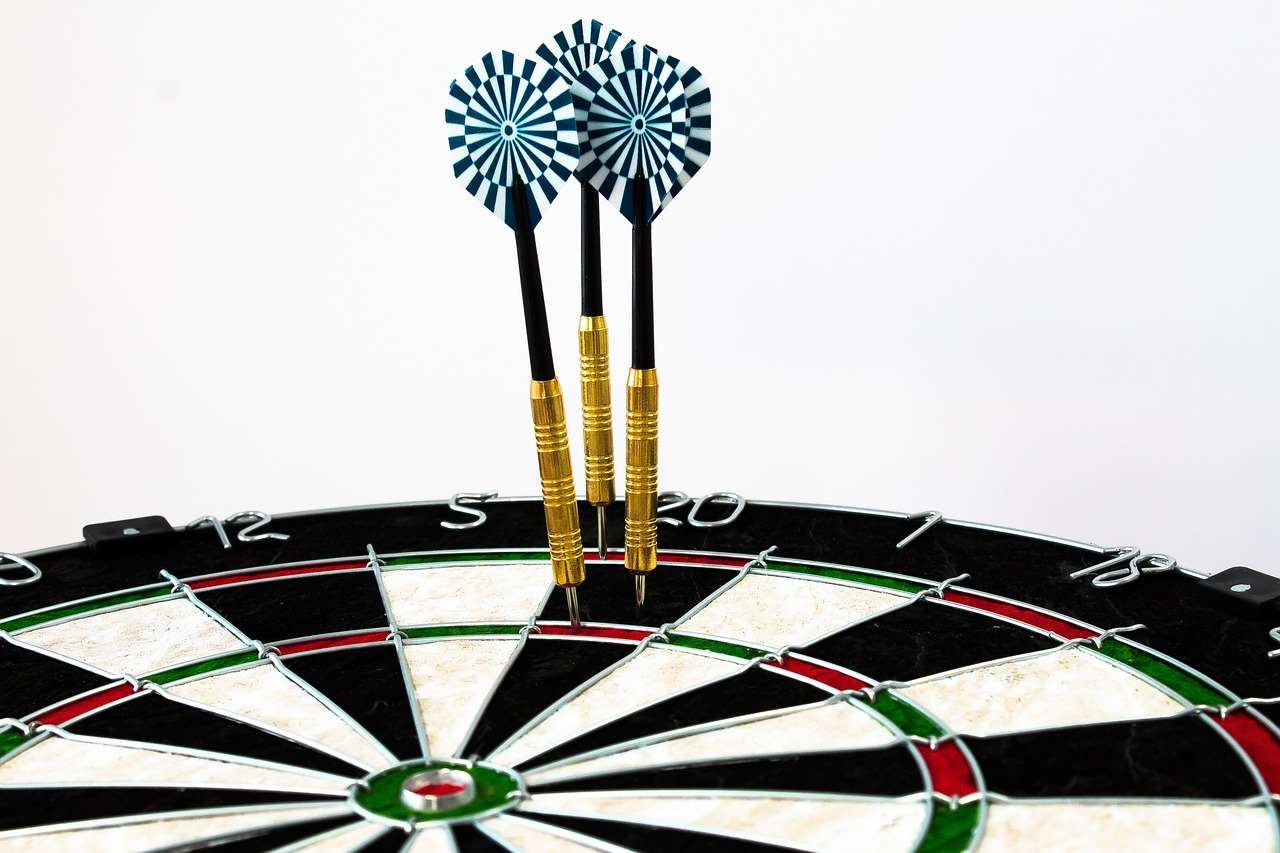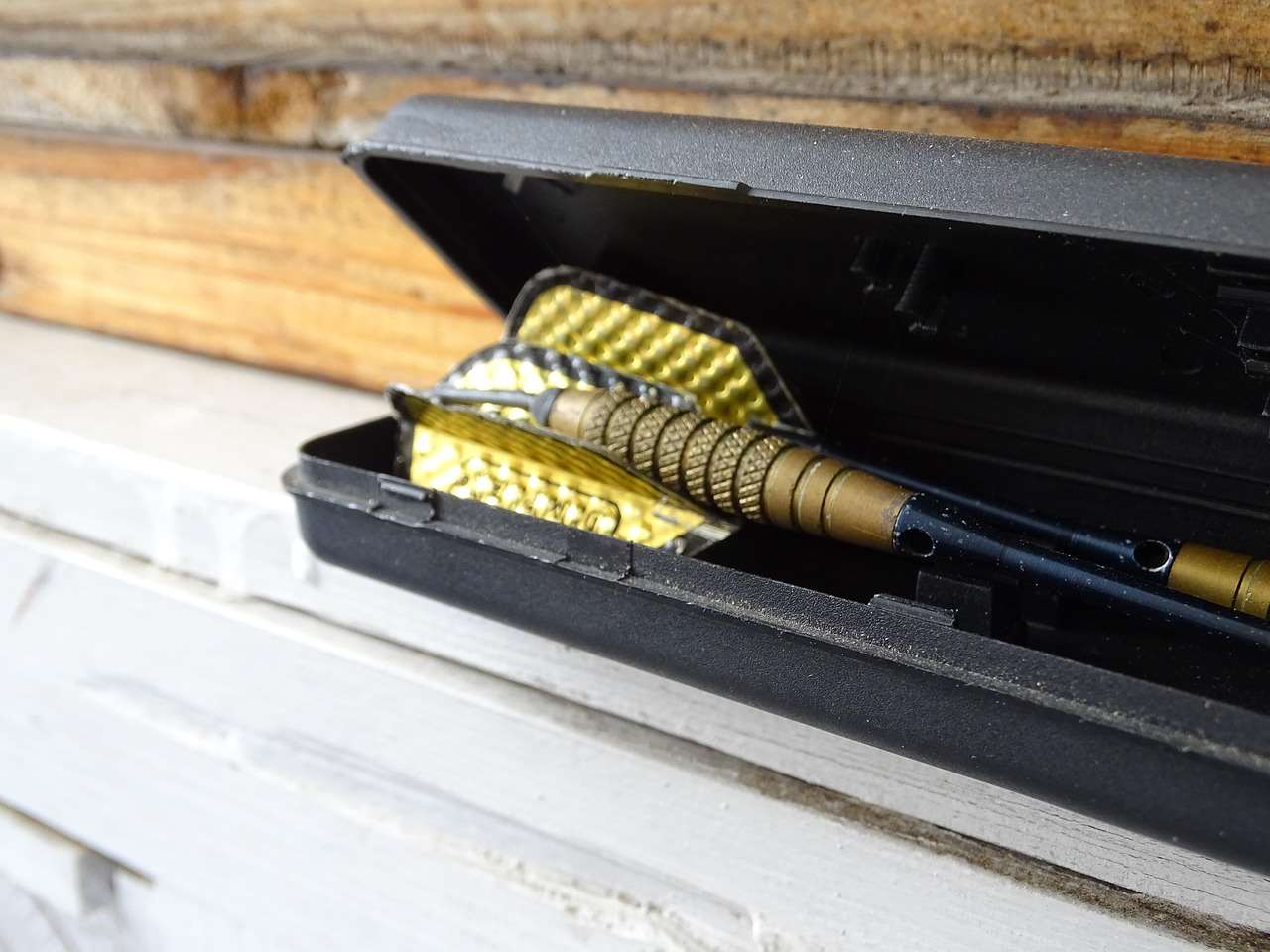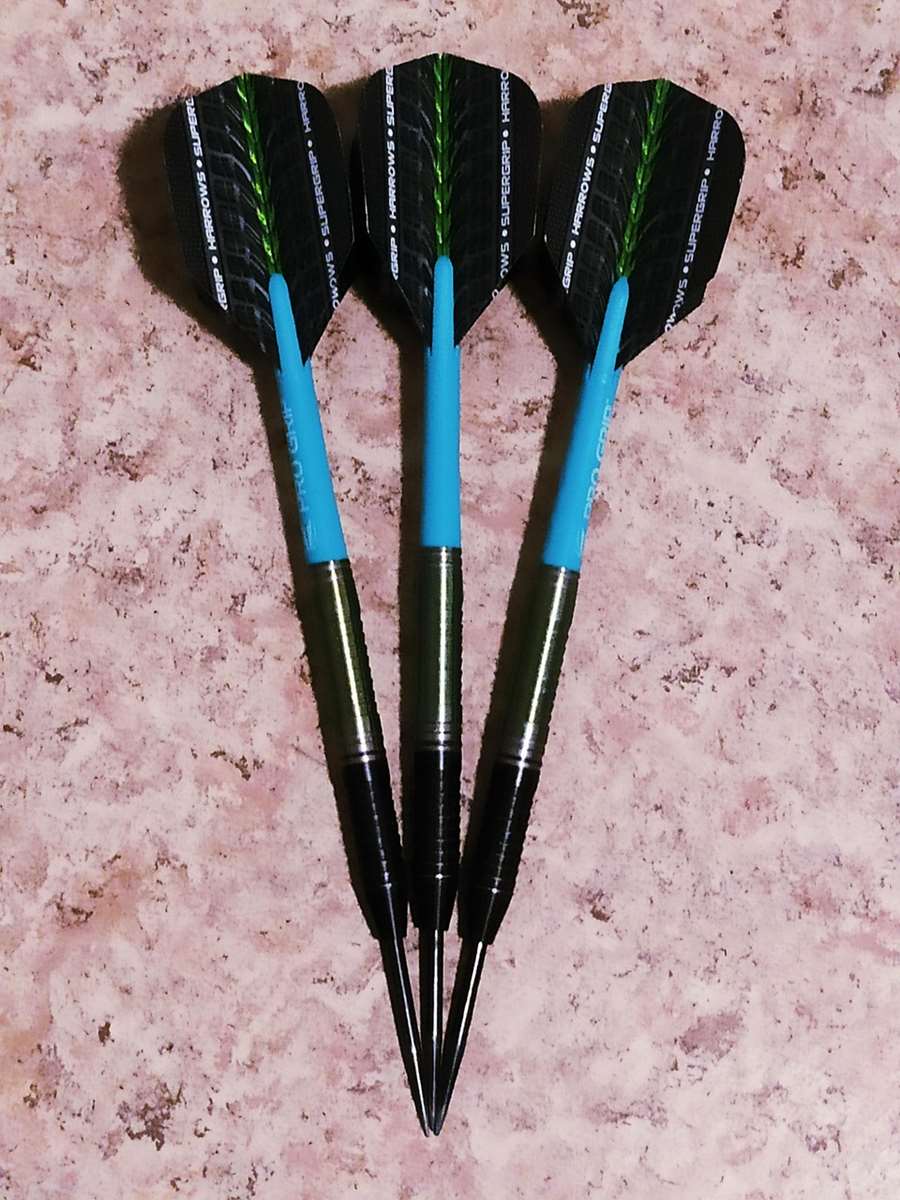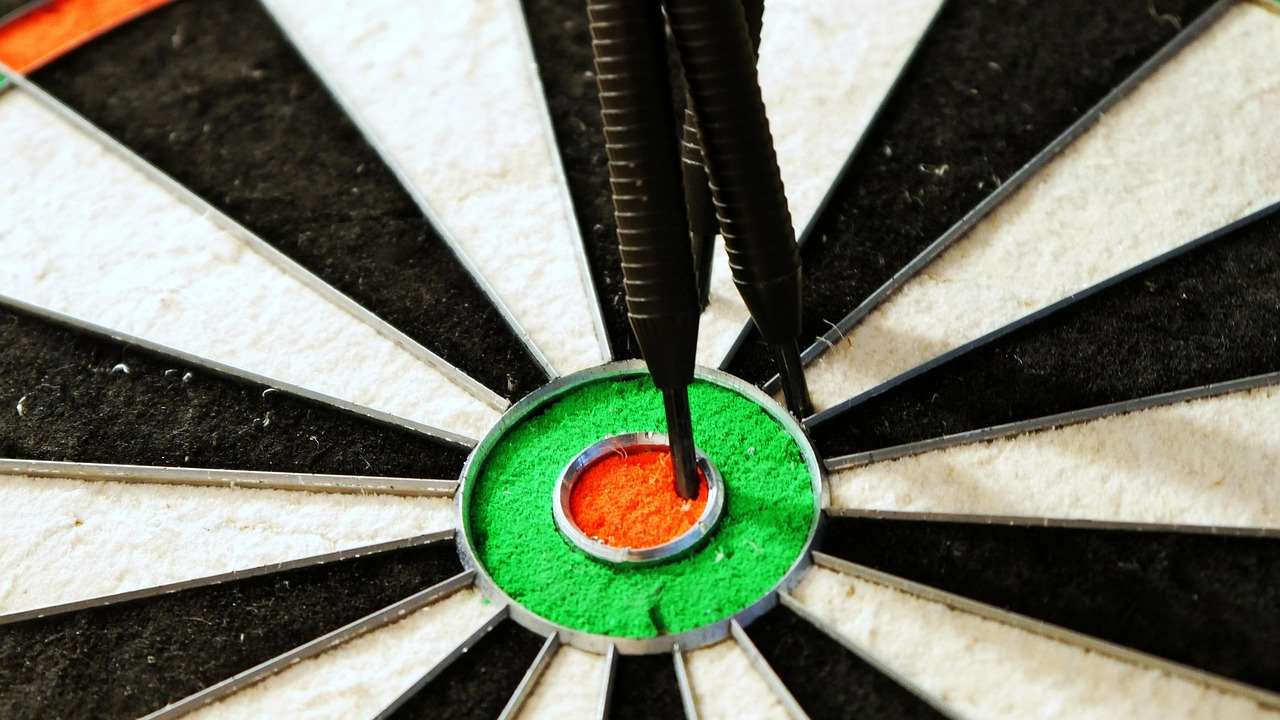Frustrated with darts constantly bouncing back from your dartboard surround? The key to minimizing **dartboard surround bounce back** lies in a combination of factors: choosing the right surround material, ensuring proper dartboard setup, and refining your throwing technique. This article will delve into the common causes of dart bounce-outs and provide practical solutions to improve your darting experience.
⚠️ Still Using Pen & Paper (or a Chalkboard)?! ⚠️
Step into the future! The Dart Counter App handles all the scoring, suggests checkouts, and tracks your stats automatically. It's easier than you think!
Try the Smart Dart Counter App FREE!Ready for an upgrade? Click above!
Understanding Dartboard Surround Bounce Back
**Dartboard surround bounce back** is a common problem for both novice and experienced dart players. It occurs when a dart hits the surround (or even the board itself) at an angle and is deflected back towards the player, rather than sticking firmly in the board. This can be frustrating and can also damage your darts or the surrounding area. Understanding the reasons behind this phenomenon is the first step towards solving it.
Common Causes of Bounce Backs
- Dartboard Quality: A low-quality dartboard may have tightly packed sisal fibers, making it difficult for darts to penetrate and more likely to bounce. Consider that What Makes Darts Premium Quality can extend to the board as well.
- Dart Quality: Darts with dull points or a poor center of gravity are more prone to bounce-outs.
- Throwing Technique: An inconsistent or inaccurate throw can cause darts to hit the wires or the edge of the board, increasing the likelihood of a bounce back.
- Surround Material: The type of surround you use can also affect bounce back. Some materials are more forgiving than others.
- Dartboard Setup: An improperly mounted dartboard can wobble or vibrate upon impact, contributing to bounce-outs.

Choosing the Right Dartboard Surround to Reduce Bounce Back
The material of your dartboard surround plays a significant role in minimizing **dartboard surround bounce back**. Different materials offer varying levels of impact absorption and protection.
Popular Surround Materials and Their Impact
- Foam Surrounds: These are the most common and generally affordable option. Foam surrounds offer good protection for your wall and can absorb a fair amount of impact, reducing bounce-outs. However, they may be prone to wear and tear over time.
- Rubber Surrounds: Rubber surrounds are more durable than foam and offer excellent protection. They also tend to have better impact absorption, further reducing bounce-backs. However, they can be more expensive.
- Cork Surrounds: Cork surrounds are a more aesthetically pleasing option, but they may not be as effective at preventing bounce-outs as foam or rubber. They are also more susceptible to damage from dart impacts.
- Specialized Surrounds: Some manufacturers offer specialized surrounds with unique designs or materials that are specifically engineered to minimize bounce back. These may be worth considering if you are serious about reducing bounce-outs.
When selecting a surround, consider your budget, the level of protection you need, and your aesthetic preferences. Don’t hesitate to Choose Best Dart Equipment to suit your needs. For serious players, investing in a high-quality rubber surround can significantly improve your darting experience.

Optimizing Dartboard Setup to Minimize Bounce Back
Even with the best dartboard and surround, an improperly installed dartboard can still lead to excessive **dartboard surround bounce back**. Ensuring your dartboard is mounted correctly is crucial for a stable and enjoyable game.
Step-by-Step Guide to Proper Dartboard Mounting
- Accurate Measurement: The center of the bullseye should be 5 feet 8 inches (1.73 meters) from the floor.
- Secure Mounting: Use a sturdy mounting bracket that is specifically designed for dartboards. Ensure the bracket is securely attached to the wall, preferably into a stud.
- Leveling: Use a level to ensure the dartboard is perfectly vertical. This will prevent the board from wobbling or vibrating upon impact.
- Tightening: After mounting, double-check that all screws and bolts are tight to prevent any movement.
- Wall Protection: If you’re concerned about wall damage, consider using a backboard behind the surround for added protection.
Taking the time to properly mount your dartboard will not only reduce bounce-outs but also extend the lifespan of your board and surround.
Improving Your Throwing Technique to Reduce Bounce Backs
While equipment plays a role, your throwing technique is a major factor influencing **dartboard surround bounce back**. Refining your technique can improve accuracy and reduce the likelihood of darts hitting the wires or the edge of the board.
Key Elements of an Accurate Dart Throw
- Stance: Maintain a consistent and balanced stance. Your feet should be shoulder-width apart, with your throwing foot slightly forward.
- Grip: Use a comfortable and consistent grip that allows for a smooth release. Experiment with different grips to find what works best for you.
- Arm Movement: Keep your upper arm stable and use your forearm to generate the throwing motion. Avoid jerking or erratic movements.
- Release: Release the dart smoothly and consistently at the same point in your throwing motion.
- Follow-Through: Follow through with your arm after releasing the dart to ensure accuracy and consistency.

Practice regularly to refine your throwing technique and improve your accuracy. Consider recording yourself to identify areas for improvement. Even understanding the difference between Difference Budget Premium Darts can improve your throwing performance
Choosing the Right Darts for Fewer Bounce Backs
The type of darts you use can significantly impact the frequency of **dartboard surround bounce back**. Darts with the right weight, grip, and point can help you achieve better accuracy and reduce bounce-outs.
Factors to Consider When Choosing Darts
- Weight: Experiment with different dart weights to find what feels most comfortable and controllable. Heavier darts may be more stable, while lighter darts may be easier to throw.
- Grip: Choose a dart with a grip that provides a secure and comfortable hold. Different types of grips are available, such as knurled, ringed, and smooth.
- Point: Ensure your dart points are sharp and well-maintained. Dull points are more likely to glance off the board and cause bounce-outs. Consider using Best Budget Darts For Beginners for a starting point.
- Flights: The shape and size of your dart flights can affect the dart’s trajectory and stability. Experiment with different flights to find what works best for you.
Investing in a quality set of darts that are well-suited to your throwing style can make a noticeable difference in your performance and reduce bounce-outs.

Maintenance Tips to Prevent Dartboard Surround Bounce Back
Regular maintenance of your dartboard, surround, and darts is essential for preventing **dartboard surround bounce back** and ensuring a long lifespan for your equipment.
Essential Maintenance Practices
- Rotate Your Dartboard: Regularly rotate your dartboard to distribute wear evenly and prevent certain sections from becoming overly compressed.
- Sharpen Dart Points: Keep your dart points sharp by using a dart sharpener. This will help them penetrate the board more easily and reduce bounce-outs.
- Clean Your Dartboard: Remove dust and debris from your dartboard with a soft brush or cloth. Avoid using water or cleaning solutions, as they can damage the sisal fibers.
- Inspect Your Surround: Check your surround regularly for any signs of wear and tear, such as dents or cracks. Replace it if necessary.
- Tighten Mounting Hardware: Periodically check the mounting hardware of your dartboard to ensure it is still secure.
By following these simple maintenance tips, you can keep your dartboard and surround in optimal condition and minimize bounce-outs.

Advanced Techniques for Minimizing Bounce Back
Beyond the basics, several advanced techniques can further reduce the occurrence of **dartboard surround bounce back**. These techniques may require more practice and experimentation, but they can yield significant improvements.
Strategies for Expert Players
- Targeting: Focus on aiming for the softest parts of the board, such as the areas between the wires.
- Grouping: Aim to group your darts tightly together in the same area of the board. This can help to create a softer impact and reduce bounce-outs.
- Consistent Release: Practice releasing your darts at the exact same point in your throwing motion every time. This will improve your accuracy and consistency.
- Mental Focus: Maintain a calm and focused mental state while throwing. This can help to improve your concentration and reduce errors.
Conclusion
Minimizing **dartboard surround bounce back** requires a multi-faceted approach that includes choosing the right equipment, optimizing your setup, refining your throwing technique, and practicing regular maintenance. By addressing these factors, you can significantly reduce bounce-outs and enjoy a more satisfying and enjoyable darting experience. Investing in premium dart equipment may seem expensive initially, but it often translates to better performance and durability in the long run. Now, put these tips into practice and see the difference they make in your game!
Hi, I’m Dieter, and I created Dartcounter (Dartcounterapp.com). My motivation wasn’t being a darts expert – quite the opposite! When I first started playing, I loved the game but found keeping accurate scores and tracking stats difficult and distracting.
I figured I couldn’t be the only one struggling with this. So, I decided to build a solution: an easy-to-use application that everyone, no matter their experience level, could use to manage scoring effortlessly.
My goal for Dartcounter was simple: let the app handle the numbers – the scoring, the averages, the stats, even checkout suggestions – so players could focus purely on their throw and enjoying the game. It began as a way to solve my own beginner’s problem, and I’m thrilled it has grown into a helpful tool for the wider darts community.